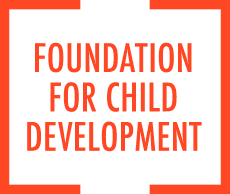https://www.fcd-us.org/children-in-immigrant-families-the-u-s-and-50-states-national-origins-language-and-early-education/
Twenty percent of children in the U.S. now live with at least one foreign born parent. This research brief by Child Trends and the Center for Social and Demographic Analysis of the State University of New York at Albany, reveals that children in immigrant families are deeply rooted in the U.S. (four in five are American citizens) and nearly one-half speak English fluently and another language at home. At the same time, many young children in immigrant families would benefit from quality early education programs to further their integration into American society.
State-by-State Data on Children in Immigrant Families:
- Children in newcomer families have parents from more than 125 countries and live in all 50 states.
- Forty percent of children with immigrant parents have origins in Mexico, and these children account for 50 percent to 81 percent of children in newcomer families in 12 states including AZ, CA, CO, ID, NV, and NM in the West; AK, OK, and TX in the South, and IL, KS, and NE in the Midwest.
- Children with other national origins are more predominant in the remaining states.
Children in Immigrant Families have Strong Roots in America:
- According to the study, 24 percent, or one in four children in newcomer families, live with both a foreign-born and a U.S.-born parent.
- In 13 states, this percentage is 40 percent or more, AL, AK, KY, MA, MI, MO, MN, NH, ND, OH, VT, WV, and WY.
- 68 percent of children in newcomer families live with parents who have been in the United States for 10 or more years. This number includes the 24 percent of the children whose parents were born in the U.S.
- 79 percent, or four in five children in newcomer families, are American citizens.
Many Children Live in Families Speaking both English and another Language:
- A substantial majority of children in immigrant families live with a parent who is fluent in English (nearly three in five) a key indicator of integration into American society.
- Three in four children in newcomer families (74 percent) are fluent in English. The vast majority, 74 percent, speaks English fluently, but 26 percent are linguistically isolated - living in households in which no one over age 13 speaks English fluently.
Low Participation in Pre-Kindergarten/Early Education Programs:
- Children in immigrant families are less likely than children in native-born families to be enrolled in early education programs which can foster their language integration and school readiness.
- In only 12 states are children in newcomer families at ages 3 and 4 about as likely, or more likely, to be enrolled in school, CT, DE, KY, MI, MT, NH, ND, OH, PA, TN, VT, WV, as well as the District of Columbia.
- Socioeconomic barriers related to the affordability and accessibility of early education programs account for at least one-half and perhaps the entire enrollment gap separating
children in immigrant families from non-immigrant families.
Policy and Program Implications/Recommendations:
- Resources targeted toward increasing Prekindergarten participation among children of immigrants can contribute to their educational success in K-12 education.
- Early education policies, programs, and learning experiences should encourage literacy in both English and the home languages of children.
- Family literacy programs that focus on both parents and children can enhance parents’ economic and educational roles vis-à-vis their children.
